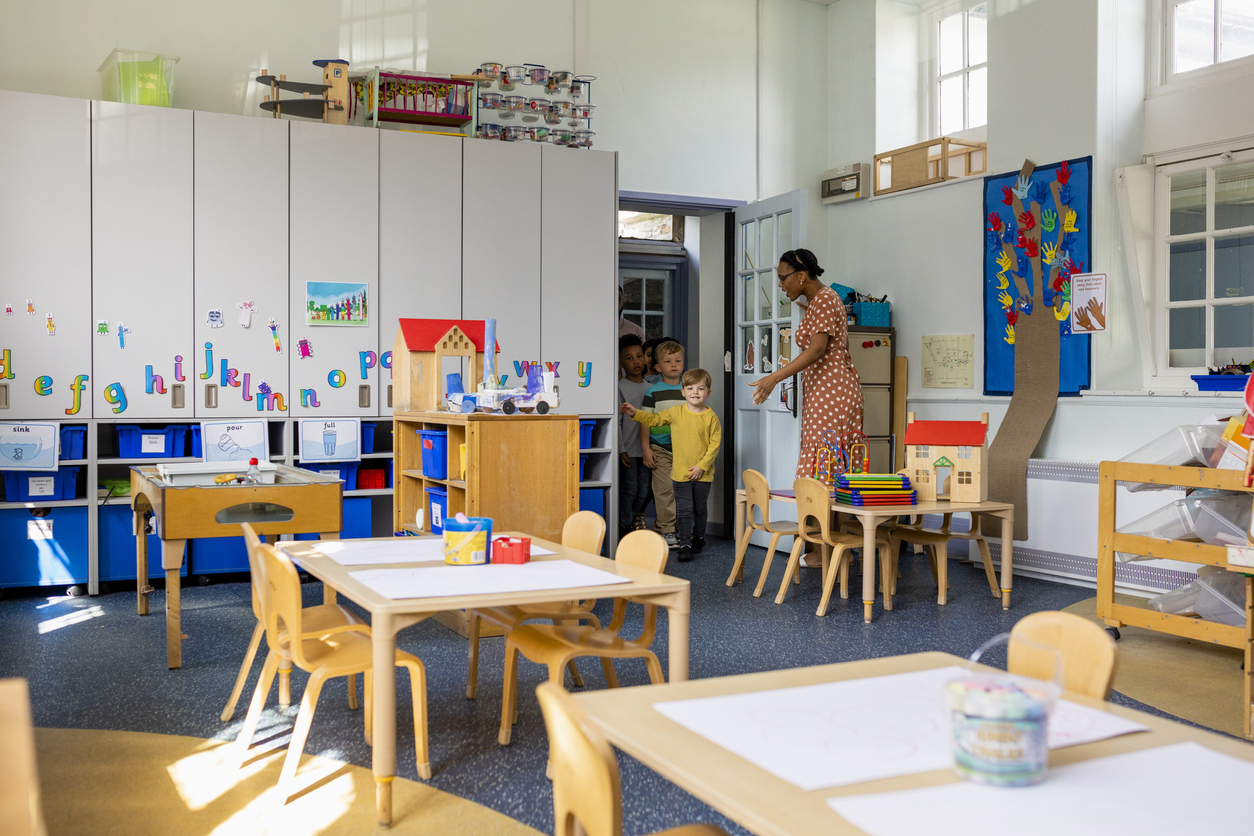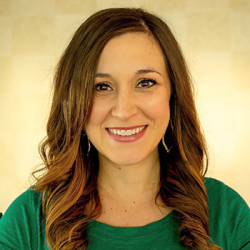
A PBL-friendly classroom fosters joy and critical thinking for students engaged in projects. The classroom transforms into a shared space where students have meaningful opportunities for voice and choice in co-designing the room's setup and co-creating the resources they’ll use throughout their projects. As a result, the physical environment itself serves as an educator that aids in the deeper learning and thinking that takes place during projects and beyond.
The classroom as the third teacher
In a PBL-friendly classroom, the environment itself is an integral, intentional part of the PBL work students engage in. While the concept of environment as a third teacher comes from the Reggio Emilia approach, it translates beautifully to a PBL classroom, because it helps us put tangible, concrete actions into practice. We can name how to provide student agency and foster deeper inquiry with the help of the classroom environment. We have an opportunity to think strategically about the environment and consider a broader perspective on our classrooms that is inclusive of the physical space, as well as the social, emotional, and cultural atmosphere.
As you design the learning environment, reflect deeply on what values you want to support in your classroom. How are those values evident in the environment? For example, if you value collaboration then take a close look around the room—how are the tables organized? Do they prompt collaboration? Next, consider the activities and experiences. Do they prompt students to engage in work together? What if more went into the classroom setup beyond “the way we’ve always done it?” Lastly, what resources are included and why? Think about what role students might play in how the classroom space flows and what resources they could place in strategic, accessible spots around the classroom.
While Pinterest-worthy posters are fun for adults to look at, they aren’t necessarily helpful for moving student learning forward. If the goal is for students to use the resources around the room, then consider their voices in what resources are out, where resources go, and how students interact with them.

Co-designing the classroom
Voice and choice is an important Design Element that helps build a strong culture in favor of PBL, however it can be challenging to integrate authentically, especially early in a PBL journey. A great place to start is by co-creating a set of classroom agreements versus giving students classroom rules. Imagine the buy-in when time is taken from the very beginning to invite students into the care of each other and the physical space.
Another way to incorporate student voice and choice while creating a PBL-friendly classroom is to invite students to share what works best about the arrangement of the space. The goal is to co-design a physical flow that inspires individual and teamwork, with flexible options that invite reflection, critique, and revision. One idea for getting students involved in the arranging process could be a classroom glyph (a blueprint of the space first created individually, shared in small groups, and finally with the whole group). This simple activity can be a great way to learn more about what students need and how the classroom resonates with them. A bonus is the inherent connection to several content standards such as map skills, graphing (e.g., using a coordinate plane on graphing paper), or scale.

Showcasing student work in progress
Project Based Learning invites us to embrace work in progress with an emphasis on the learning process largely through cycles for critique and revision as students build new understanding. When designing a PBL-friendly classroom it is helpful to think about how the classroom itself encourages students to trust each other to grow their work as they learn. To that end, a project wall is a fantastic space to display students’ work both during and after a project. As a dedicated, predictable spot for project resources, the project wall can be a powerful support for learners as they prepare to share their work beyond the classroom.

from character development to notes on the story.
Bringing it all together
There is no shortage of possibilities as you design a PBL-friendly classroom. While this work can take place at any time, the beginning of the year or semester provides a beautiful opportunity to reflect deeply on the classroom design and culture we currently have in place. May you and students find joy in being intentional with how the classroom can be another teacher, in how you might co-design the physical space and resources with students, and in how you can encourage students to make their learning visible throughout the project.
Recommended Readings
The Third Teacher: 79 Ways You Can Use Design to Transform Teaching & Learning,
A collaborative work book by Bruce Mau Design, VS Furniture, and OWP/P Architects
Designs for Living and Learning: Transforming Early Childhood Environments by Margie Carter, Debbie Curtis, and Deb Curtis
Connecting Through Caring and Learning Spaces by Lella Gandini, Lella, Carolyn P. Edwards, and George Forman. The Hundred Languages of Children: the Reggio Emilia Experience in Transformation.
The Science of Classroom Design by Youki Terada and Stephen Merrill

